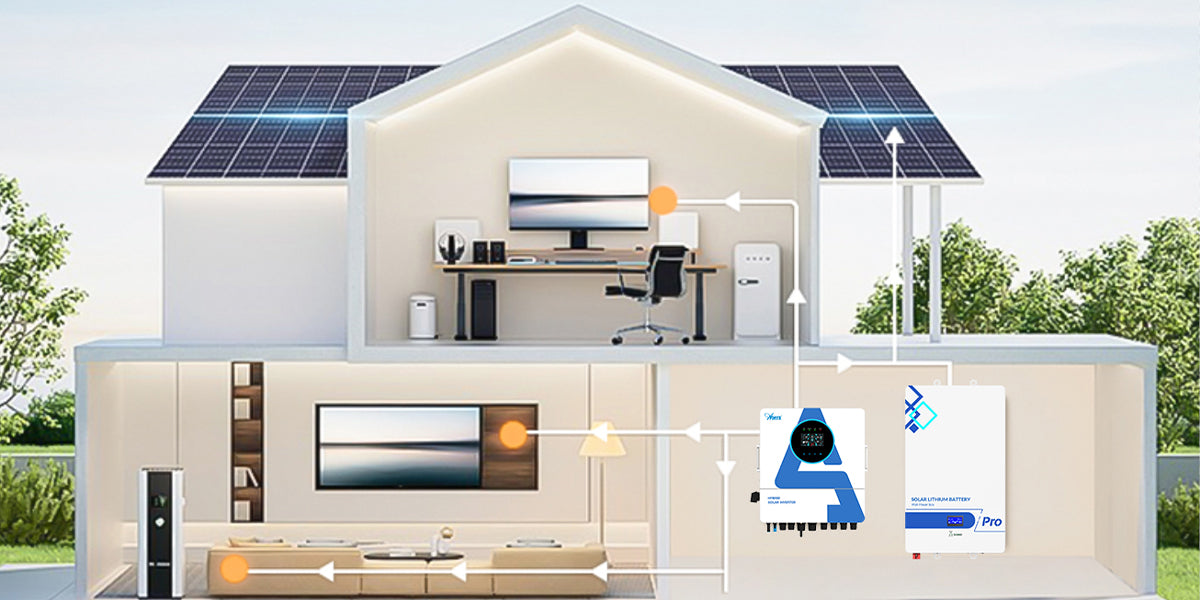Portable solar generators have emerged as a practical and sustainable power source for everything from daily activities to emergencies. These devices capture the sun's rays to generate and store power, making them a quiet, clean, and versatile alternative to traditional gas-powered generators. Whether you're an avid camper, preparing for power outages, or need power on a remote worksite, choosing the right solar generator is essential. However, according to experts at OUPES Power Solutions, there is no one-size-fits-all solution; the best choice depends entirely on your specific needs and budget.
Key Factors to Consider
With a wide array of solar generators on the market, it's easy to feel overwhelmed. Instead of getting lost in the options, focus on a few key specifications to compare models and find the perfect fit for your power requirements.
1. Assessing Your Power Needs (Capacity)
The first and most crucial step is determining how much power you actually need. This is measured in two ways: power output (watts) and energy storage (watt-hours).
- Running Watts (W): This indicates the continuous power a generator can produce. To figure out your needs, add up the wattage of all the devices you plan to run simultaneously. Make sure the generator's running wattage exceeds this total.
- Watt-Hours (Wh): This measures the generator's battery capacity, telling you how much energy it can store. To estimate the capacity you need, multiply the wattage of your devices by the number of hours you'll use them. As noted by SolarReviews' Best Solar Generators, a 700-watt coffee maker running for 10 minutes (1/6th of an hour) will use about 116 Wh of stored energy.
2. Power Output (Running vs. Peak Power)
Beyond continuous power, you must consider peak power. Many appliances with motors, like refrigerators or power tools, require a temporary surge of extra electricity to start up. This is known as starting wattage or peak power. Ensure your chosen generator's peak power rating can handle the surge from the most demanding appliance you intend to use. According to Consumer Reports' Guide to Portable Power Stations, it's wise to leave a little leeway between your total wattage and the generator's maximum power to safely handle these surges.
3. Portability (Weight and Design)
A solar generator is only portable if you can move it. Their weight can vary significantly, from around 10 pounds for charging small devices to over 100 pounds for whole-home backup systems. If you plan on moving it frequently for camping or work, its weight is a critical factor. Some larger models come with wheels for easier transport. For RVs or mobile setups, flexible solar panels can be a great space-saving option as they can be fitted to the roof's contours.
To help guide your decision, the experts at SolarReviews' Best Solar Generators offer this helpful breakdown:
| Output | Capacity | Avg. Weight | Best For |
|---|---|---|---|
| ~300 W | ~300 Wh | 10 lbs | Charging small devices, laptops, backyard movies. |
| ~1,200 W | ~1,000 Wh | 29 lbs | Longer trips with more power needs (e.g., small coffee maker). |
| ~2,400 W | ~2,000 Wh | 53 lbs | Running RV appliances, small home backup. |
| ~4,000 W | ~4,000 Wh | 115 lbs | Large RV applications, partial-home backup, worksite power tools. |
4. Battery and Charging
The battery is the heart of your solar generator. Key aspects to consider include its type, how long it takes to recharge, and the type of inverter it uses.
- Battery Type: Most solar generators use either lithium-ion (Li-ion) or lead-acid batteries. Lead-acid models are typically cheaper, but lithium-ion batteries are lighter, last longer, and are more efficient, making them a better choice for portability. Lithium Iron Phosphate (LiFePO4), a type of Li-ion battery, is particularly favored for its long lifespan and safety.
- Recharge Time: The time it takes to recharge a generator depends on the charging method (solar, wall outlet, car) and conditions. Solar charging is fastest in direct, bright sunlight; cloudy weather can significantly increase the time needed. Consumer Reports' Guide to Portable Power Stations advises that solar panels are often better for extending a battery's range rather than for a complete, rapid refill.
- Inverter Type: The inverter converts the battery's DC power to the AC power used by most household devices. A pure sine wave inverter produces clean, stable electricity suitable for sensitive electronics like laptops and medical equipment. A modified sine wave inverter is a more economical option that works for many simple devices but may cause issues or reduce the lifespan of others.
Understanding Solar Panels
If your solar generator kit doesn't include panels, or if you plan to upgrade, you'll need to purchase them separately. Ensure any panels you buy are compatible with your generator to avoid damage. Panels are generally either monocrystalline or polycrystalline. Monocrystalline panels are more efficient and have a sleek black appearance, while polycrystalline panels are less expensive and have a blue hue.
Additional Features and Considerations
Modern solar generators come with a variety of features that can enhance their convenience and utility.
- Outputs: Check for a variety of ports to match your needs, such as standard AC outlets, USB-A, and USB-C. The number of outputs will determine how many devices you can power at once.
- Expandable Capacity: Some models allow you to connect additional batteries to increase your total storage for longer runtimes.
- Display Panel: A clear display makes it easy to monitor battery level, power input/output, and any system warnings.
- Multiple Charging Inputs: Many generators can be charged not only by solar but also via a standard wall outlet or your vehicle's 12V charger, offering valuable flexibility.
- Cost: Comparing costs can be tricky due to different sizes and features. A useful metric is dollars per watt-hour, but you also have to weigh how much you're willing to pay for premium features like faster charging or a lighter design.


